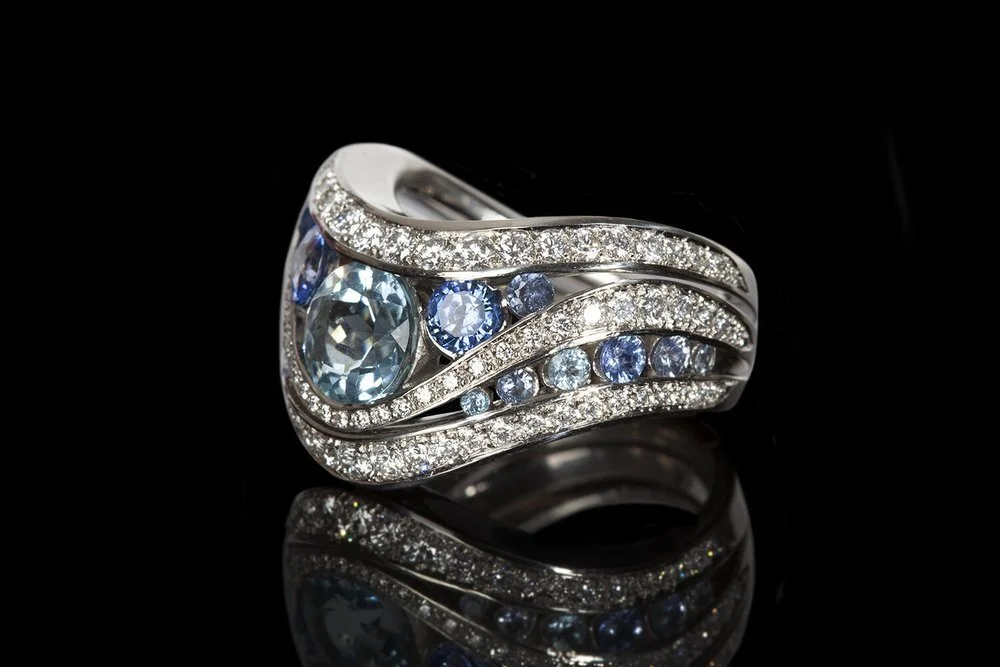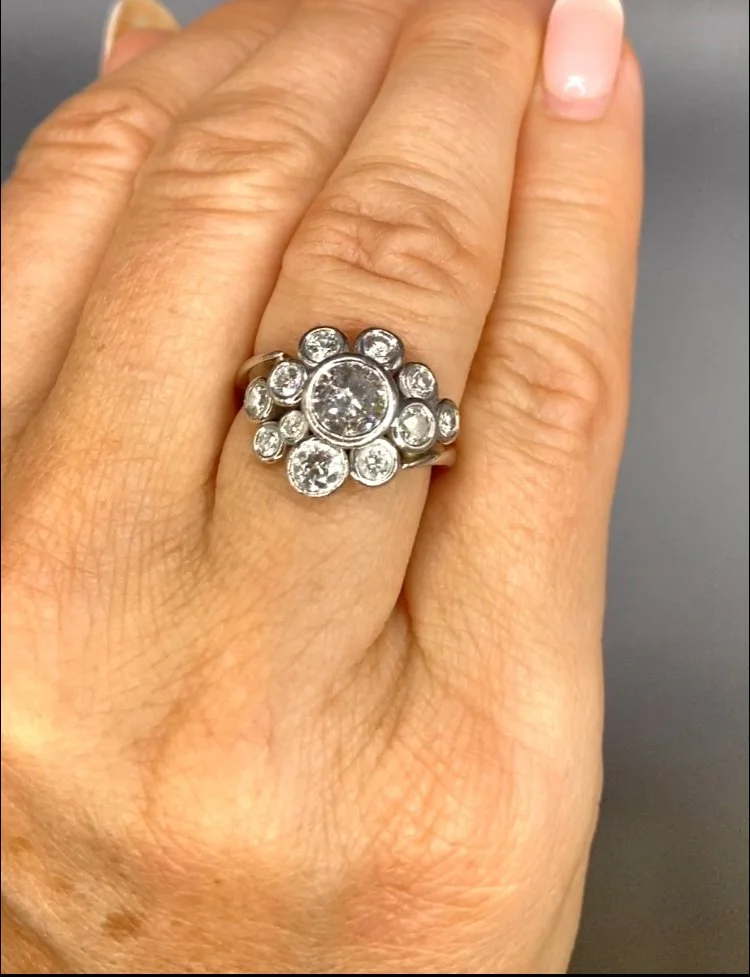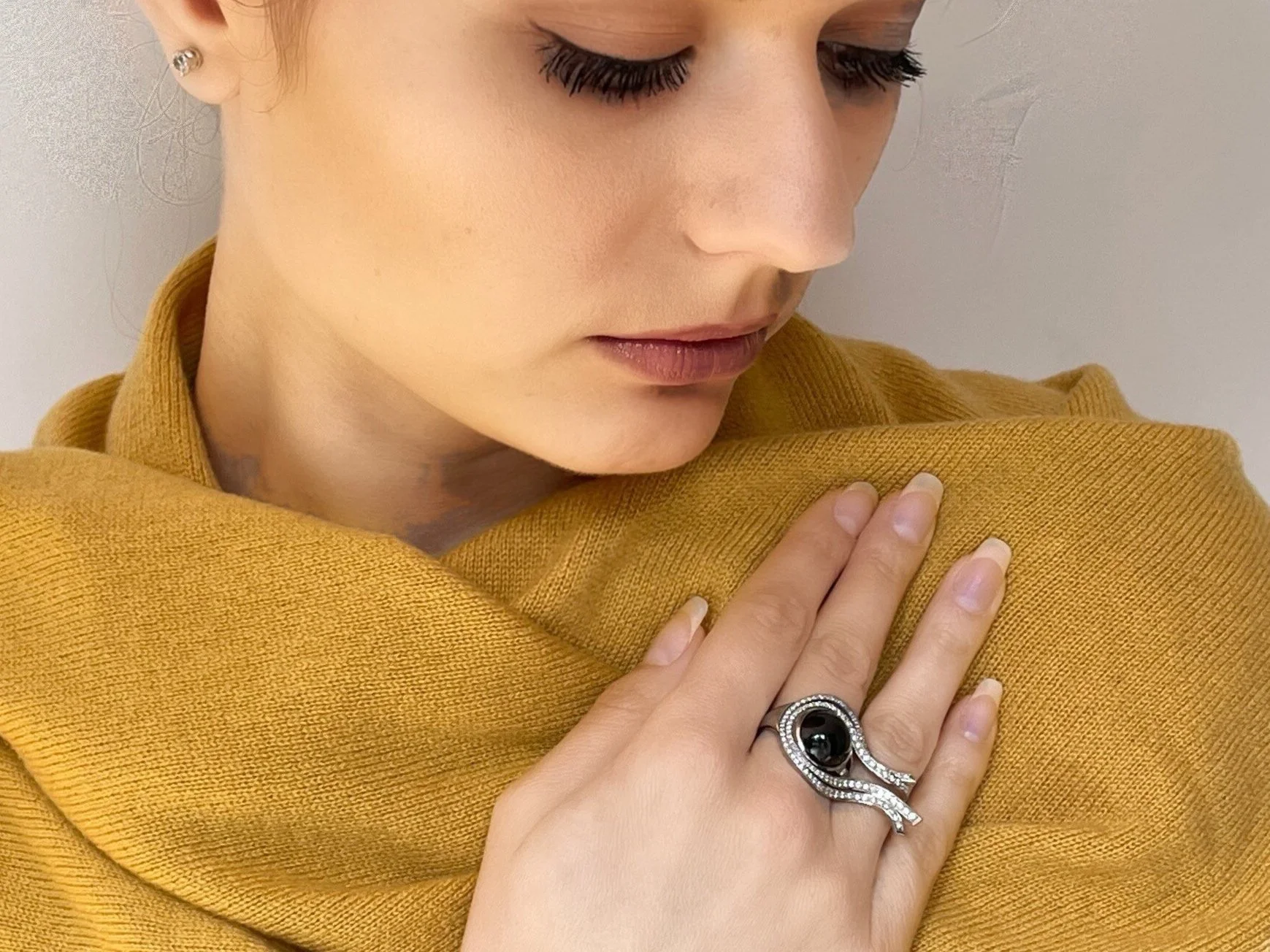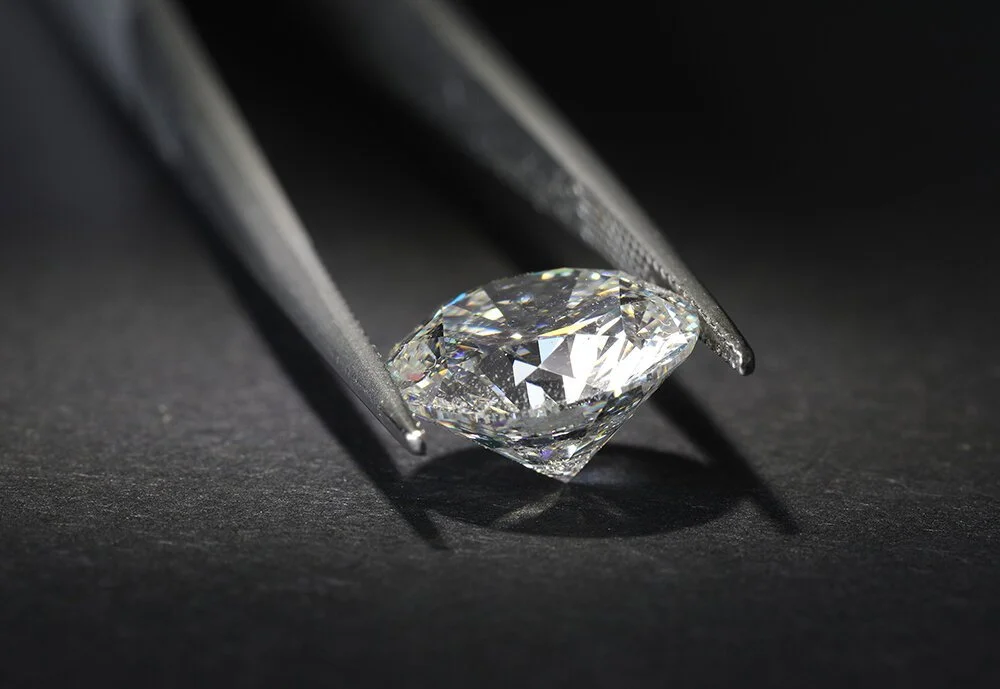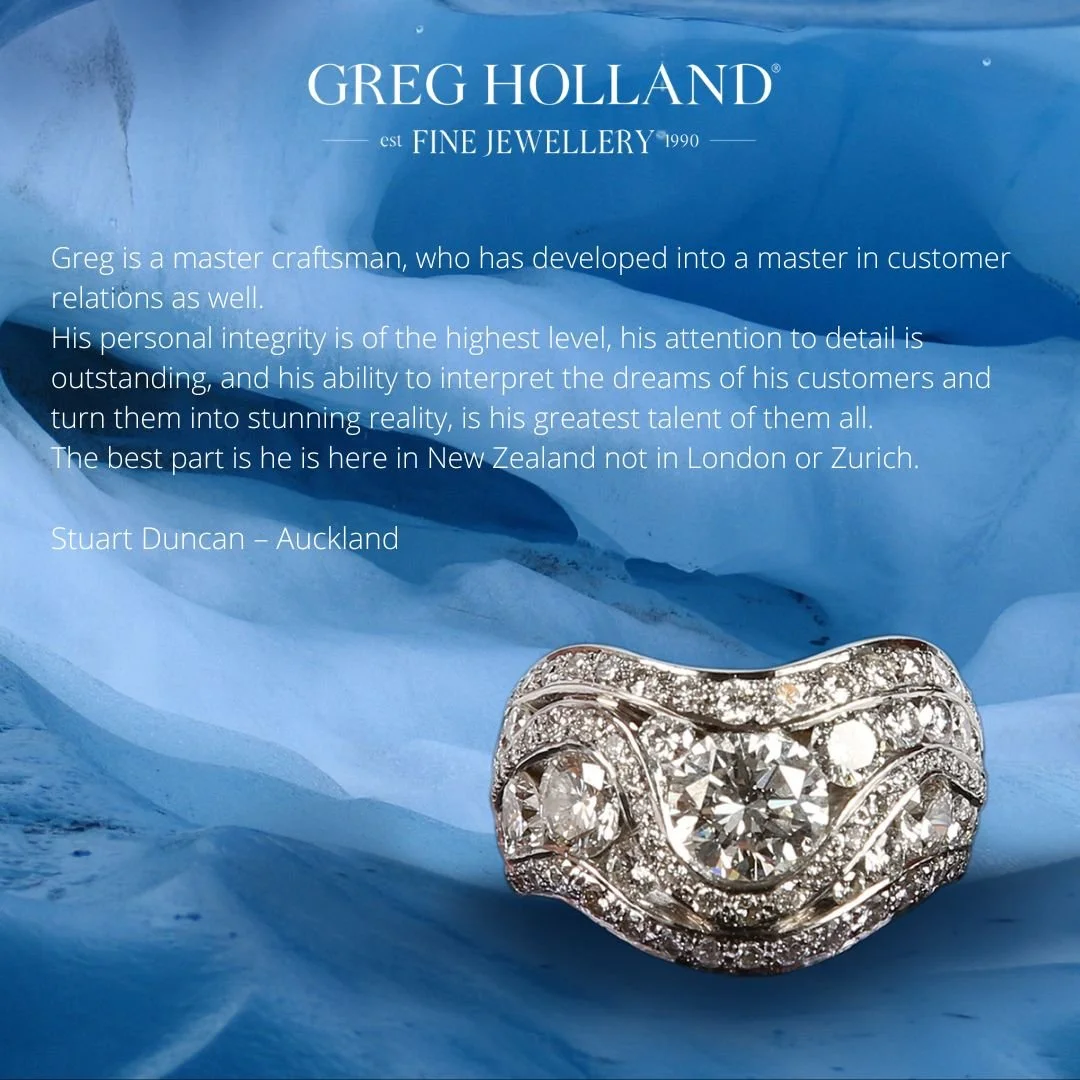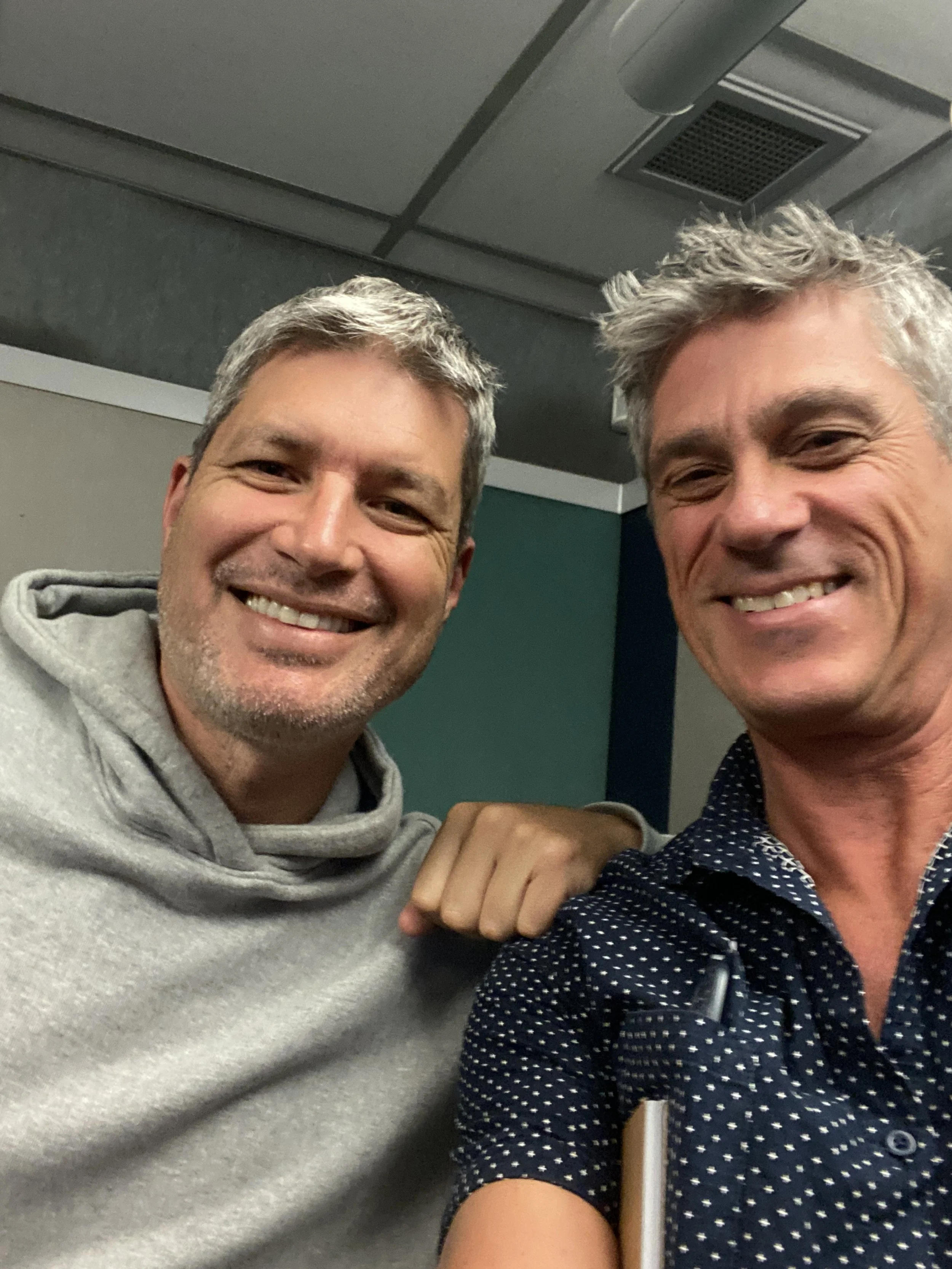Trusted.
It was a privilege to work with a ring carrying such deep family significance. Our customer sought us out as a trusted jeweller, flying in from out of town to meet us in person and ask the important questions before commissioning this piece.
Using three of the original diamonds, we created a new design that honours its legacy while continuing the family's story in a meaningful new form.
The trust placed in us was significant and never taken for granted.
Read MoreZircon has to be one of the most misunderstood gemstones?
Often confused with man-made Cubic Zirconia,(CZ) Zirconium dioxide
Make no mistake, Zircon is a gem worthy of your attention.
Some Zircon crystals are over 4 billion years old, making them among the oldest materials on Earth. Despite its rich history and geological significance, Zircon often gets overlooked, and is very underutilised. I believe that Zircon deserves more attention.
Take Grandma’s old brooch, for instance. Many clients tell me, “It’s nice… but it’s not something I’d wear.” That’s where we come in. We can redesign it, incorporating its diamonds, sapphires, rubies, emeralds, you name it into a completely modern and wearable piece, even reusing the gold or platinum.
Read MoreTo ensure the best results, we carefully analyse the piece to understand how it was constructed. This step is crucial to avoid causing further damage as there are many ways to craft a piece. There are many types of solders each with its own melting temperature, so care must be taken before any work is carried out to determine the most effective way to restore a piece for you.
With our expertise we can provide sound advice, and perform repairs to the highest standard.
If you have a treasured piece in need of attention, we’re here to help.
For our international customers, investing in New Zealand made fine jewellery remains exceptionally competitive. Even with a 10% tariff, the favourable exchange rate at around 57 - 60c USD v NZD we are still positioned to continue offering finely crafted jewellery at outstanding value.
Read MoreRemodelling jewellery has always been a meaningful way to honour the past while creating something fresh and new. While it has long been popular, I noticed a surge in enquiries post-lockdown, perhaps a reflection of people valuing sentimentality and sustainability more than ever.
Read MoreFor investors and collectors alike, acquiring a truly rare gemstone is not just a financial decision but a chance to own a piece of history, an asset that transcends generations. As global demand for these treasures continues to rise, they remain a beacon of timeless value in an ever-evolving investment landscape.
Read MoreHaving spent many years in the fine jewellery industry, there are two things that remain true. First, I am hard to impress, and second, no matter how much time passes, I am still in awe of the sheer beauty of Mother Nature.
Read MoreTo qualify as high jewellery, a piece must embody key elements: a significant gemstone; an innovative or technically ambitious construction; a statement design that captivates; a feat of design imagination that tells a story; or impeccable finishing with meticulous attention to detail.
Read MoreLab-grown diamonds are dulling the sparkle of the real thing.
The jewellery trend is taking over the traditional diamond market, mainly due to their cheaper price.
Auckland's Holland & Co Fine Jewellery owner Greg Holland told Mike Hosking people can't tell the difference between lab grown and real with the naked eye.
He says someone would need strong magnifying equipment to see the growth lines on manmade ones.
Read More


